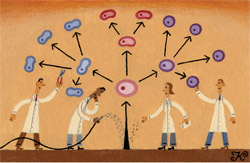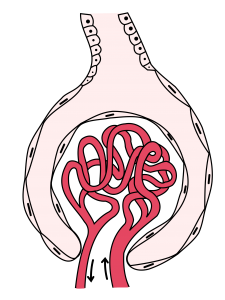 In my job as a science writer at Children’s, I comb the organization for interesting science and innovation stories that we can push out to various audiences. At the turn of the year, my colleagues ask me to recommend what I see as our top stories. We present this list to funders, industry and physicians who refer patients to us as a way to build our relationships. Today I’m sharing my 2010 list directly with you.
In my job as a science writer at Children’s, I comb the organization for interesting science and innovation stories that we can push out to various audiences. At the turn of the year, my colleagues ask me to recommend what I see as our top stories. We present this list to funders, industry and physicians who refer patients to us as a way to build our relationships. Today I’m sharing my 2010 list directly with you.
A couple of caveats: This list is largely based on research we chose to promote to the media in 2010. By necessity, it’s skewed toward research with fairly immediate clinical applications, omitting a lot of the seminal bench research done at Children’s and early-stage findings that would never get covered by the press. Also, 10 is a small and arbitrary number, leaving the choices to be guided by my personal taste and whether the findings or advances are part of a larger trend. If you want to quibble, please do by adding your comment right here under the post. That’s how we all learn!
 1. Neurogenetic disorders: Dreaming the impossible dream
1. Neurogenetic disorders: Dreaming the impossible dream
This is a brewing trend I’ve been tracking for some years at Children’s. A number of clinical trials are testing drugs that might reverse autistic symptoms and cognitive impairments – rather than just taming aggression, anxiety and other outward behaviors. It all started with genes for some known syndromes (Rett, Fragile X, tuberous sclerosis, Angelman), followed by promising results in mouse models. A lot of eyes are now on these drug trials. If only!
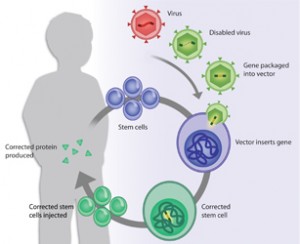 2. Gene therapy is back!
2. Gene therapy is back!
As a researcher at ABC News over a decade ago, I helped report the Jesse Gelsinger story – a death from gene therapy that brought the field to a halt in the U.S. Now, with vectors to deliver the genes that promise to be much safer, the field has been reborn, and Children’s is an active participant. In July, we launched an international gene therapy trial for “bubble boy” syndrome, and this month we signed a partnership with Généthon in France to begin a trial for Wiskott-Aldrich syndrome, another life-threatening immunodeficiency disease. More gene-therapy trials are in the pipeline – watch for announcements in 2011.
3. A safe, efficient method for creating and differentiating pluripotent stem cells
Children’s had a lot of important research in stem cell science in 2010, but this advance from the Immune Disease Institute, which merged with Children’s to become our Program in Cellular and Molecular Medicine, has the potential to be truly transformative. Reported in September, it offers a safer, easier way to reprogram ordinary human cells into stem cells, using RNAs. It can also much more readily transform stem cells into specialized cells to treat disease. Lead investigator, Derrick Rossi, was just cited by TIME magazine among the 2010 “People Who Mattered.”
4. Harnessing the hygiene hypothesis to prevent asthma
Another late-breaker. Epidemiologic studies suggest that dirty environments can protect against asthma. This lab study, published in December, suggests a potential mechanism and, in dissecting what goes on behind the scenes at the molecular level, suggests a new preventive approach to asthma.
5. Advances in kidney disease
2010 yielded some important advances in two major causes of kidney failure in children. In polycystic kidney disease, researchers have identified a promising therapeutic target, where no good treatment currently exists. In a mouse model, they were able to block the formation of fluid-filled cysts, the hallmark of the disease, in a mouse model. The origins of a second disease, focal segmental glomerulosclerosis (FSGS), have long been a mystery, but researchers at Children’s identified an important gene that disrupts the kidney’s filtering units. The finding led to the licensing of a new test in late 2010.
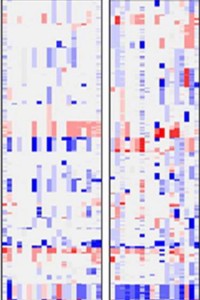 6. A personalized approach to cancer
6. A personalized approach to cancer
Medulloblastoma is the most common malignant brain tumor of childhood, with 40 to 50 percent overall mortality. In the largest genomic study of this cancer to date, Children’s researchers and their collaborators have subdivided the cancer into six different diseases—each with distinct molecular “fingerprints.” Knowledge of these tumor subtypes will improve neurologists’ ability to direct and individualize treatment, sparing some patients from aggressive treatments that can cause long-term neurologic and cognitive side effects.
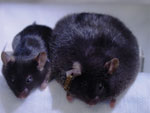 7. A new strategy normalizes blood sugars in diabetes
7. A new strategy normalizes blood sugars in diabetes
It’s pretty clear that obesity is largely responsible for the rise in type 2 diabetes. This study, published in March in Nature Medicine, helps explain why, and identifies a cellular pathway that fails when people become obese. By activating this pathway artificially, our researchers were able to normalize blood glucose levels in severely obese and diabetic mice.
8. A better genetic test for autism
Expectant parents who have family members on the autism spectrum, as well as families who already have an affected child, often request genetic testing. However, available tests are very limited. In the March 15 Pediatrics, a large study from Children’s Hospital Boston and the Boston-based Autism Consortium reported that Chromosomal Microarray Analysis, which scans for tiny DNA deletions or duplications, has about three times the detection rate of standard tests. The researchers are calling for it to become part of the standard diagnostic workup for ASD – if insurance companies step up to pay for it.
9. Continuous improvement in medicine
To test or not to test. To do an MRI, or not. To operate, or simply watch and wait. To prescribe one medication or another. For many patients or diagnoses, the best course isn’t defined. Clinical practice guidelines, when they exist, are often overly prescriptive, outdated or inappropriate for a given patient. Randomized trials measure only pre-defined outcomes and use rigid patient-selection criteria; for an individual patient, results may not apply. A quality-improvement program at Children’s called SCAMPs (Standardizing Clinical Assessment and Management Plans), launched by the Cardiac Program, is getting better results by using individual patient data to inform and continuously revise practice. It incorporates unexpected outcomes, which usually aren’t tracked, and outcomes in different patient subgroups who might benefit from alternate approaches. In the case of pediatric chest pain, one widely adopted SCAMP has safely eliminated routine but unnecessary cardiac testing, based on findings that a detailed history, physical exam and a carefully reviewed EKG can identify essentially all children needing further diagnostic work-up.
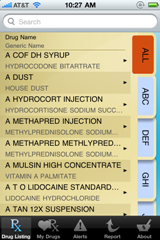
 10. Digital medicine
10. Digital medicine
Disease-related web and iPhone applications are proliferating everywhere, and Children’s is no exception. In 2010 our Informatics folks introduced MedWatcher, an iPhone app to support real-time drug safety surveillance, and TuAnalyze, an online tool to map patients’ diabetes data, launched in partnership with the social network TuDiabetes.org. Global health applications are leading the way: In our Pulmonary division, Amit Srivastava and colleagues at MIT are hard at work on a urine test to monitor compliance with tuberculosis treatment in under-resourced countries. The test’s encrypted results can be texted to healthcare providers hundreds or thousands of miles away, using virtually any cell phone.
